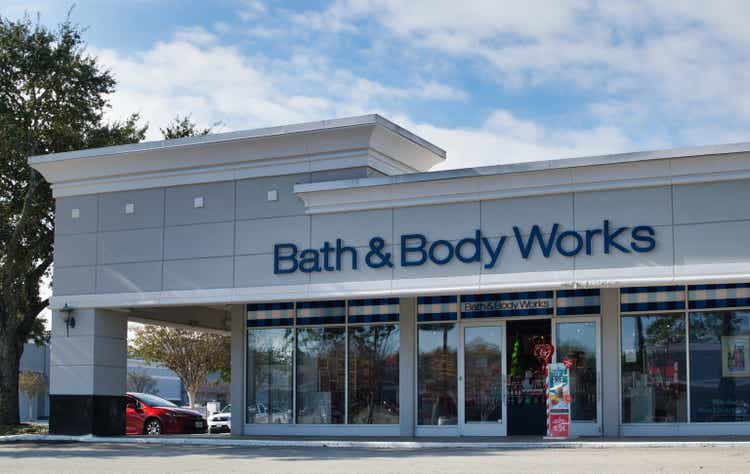Brett_Hondow/iStock Editorial via Getty Images
Bath & Body Works (NYSE:BBWI) has seen a tough time as of recent, as it too has been selling off, with investors being concerned about spending by consumers on premium (household) goods. After the pandemic and stimulus provided a huge boom in household spending on premium and household goods, the company is hit by concerns about an inflationary environment pressuring the living standard of the middle class.
The Take
In August of last year, I concluded that Bath & Body works was starting on a solid food. The company is the surviving entity from its former parent company L Brands and has become a pure play with a strong track record and solid potential. Nonetheless, there were some small concerns as well despite the positioning and reasonable valuation, as the company has of course spun off Victoria’s Secret (VSCO) which has become a standalone operation as well. Spin-offs are always tricky, if only for the reason of allocation of corporate overhead.
Bath & Body Works is the largest specialty home fragrance & fragrant body care business in the US. The company generated $6.4 billion in revenues in the year 2020, and it has been a very steady but impressive growth play with double-digit revenue growth posted for years in a row while operating margins rose to levels close to 25% of sales.
With some 2,000 stores, the extent of the operation is huge, as the company serves more than 50 million customers, and it has a huge online presence as well. The company generates its revenues from three categories, all almost equally large, including home fragrance, body care & fragrances and soaps & sanitizers.
After the solid achievements during the pandemic and the years ahead, the company has set huge ambitions for the coming years as well. In fact, the company has set a $10 billion sales goal 3-5 years in time, which given the achievements in recent times looked quite realistic.
In an update in this premium article dating January, I concluded that the company was starting to smell nicely. At the time, shares had fallen to the $55 mark. In the meantime, the company has posted third quarter results in November, and while revenues were down a percent on the year before, lapping the peak of the pandemic, they were up more than 50% on a two-year stack. The company posted adjusted earnings of $0.92 per share, with the company guiding for more than $2 in earnings per share in the seasonally strong fourth quarter.
Based on earnings power close to $5 per share, while net debt was set to fall to the $3 billion mark (at just over 1 times EBITDA), I was getting appealed with shares trading at 11 times earnings. After all, that sounds like a low multiple given the strong positioning of the business and reasonable leverage position.
Falling Further
Since my more upbeat outlook in January, shares have fallen further, now trading hands at just $47 per share. This comes amidst concerns about the health of the economy and the consumer amidst raging inflation in fuel prices, food inflation, energy, and pretty much most everyday items. Given the highly discretionary nature and price proposition of the company’s products, that causes real concerns.
At the outset of February, the company provided an upbeat comment on the fourth quarter with quarterly revenues up 11% to just over $3.0 billion. The company furthermore announced a sizeable accelerated buyback program and hiked the dividend to $0.80 per share, per annum. That is easily financed as net debt has been cut further to $2.9 billion by year-end.
Later in the month, the company posted fourth quarter earnings of $2.27 per share, as full year revenues rose a solid 22% to $7.8 billion with full year adjusted earnings posted at $4.51 per share. The issue is that no further growth is seen, in fact, the company guides for modest earnings declines in the first quarter. The full year earnings guidance for 2022 is set to come in between $4.30 and $4.70 per share.
A setback for investors was the message alongside the fourth quarter earnings release, as CEO Andrew Meslow, unfortunately, had to announce the step-down from his leadership position, due to health reasons
Having initiated a small position early in the year in the mid-fifties, I recognize that the outlook is less bullish here, but at 10 times forward earnings, that still feels too cheap even as there are risks to the guidance this year, as the secular growth story remains intact.
Hence, I have doubled down and averaged at $50 here, fully expecting no quick and big gain in the share price given the near-term underlying macro uncertainty, but in the long haul, this looks like a very decent entry point in this strong franchise.


Be the first to comment